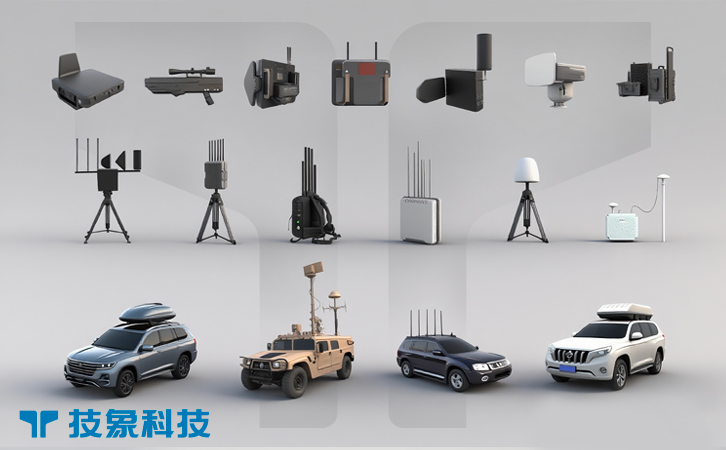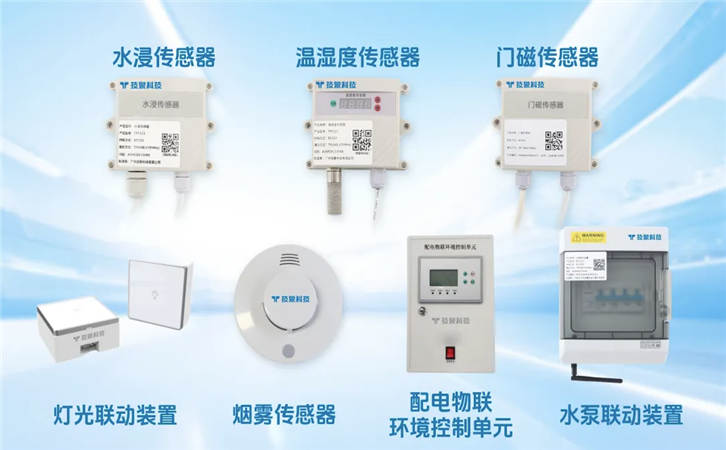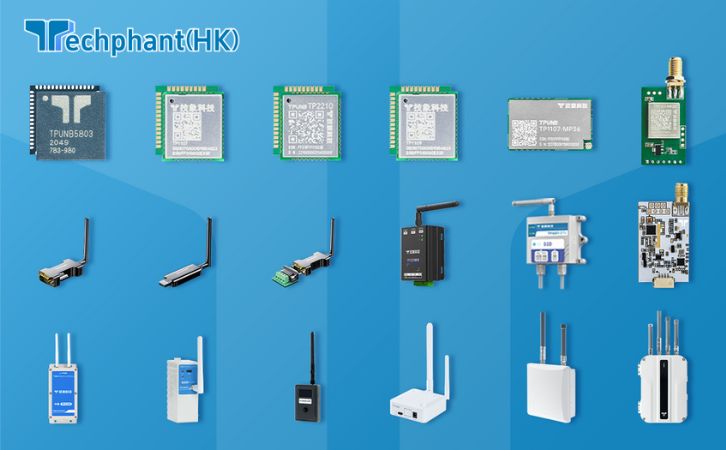Critical infrastructure—such as airports, power plants, military bases, and government facilities—faces growing threats from unauthorized drones. These unmanned aerial systems (UAS) can disrupt operations, conduct illicit surveillance, or even deliver hazardous payloads. Counter-drone strategies, or Counter-UAS (C-UAS) systems, are vital for safeguarding these high-risk sites. As drone technology evolves, so do the methods to counter them, requiring tailored approaches that combine advanced detection, precise neutralization, robust integration, and proactive risk management. This article explores counter-drone strategies designed to protect critical infrastructure, emphasizing their technical, operational, and strategic dimensions.
I. Advanced Detection Technologies for High-Risk Environments
Detecting unauthorized drones near critical infrastructure demands high-precision, multi-layered systems capable of operating in complex environments. Radar systems optimized for low-altitude, small-target detection are foundational. Modern radars, such as those developed by Robin Radar Systems, use micro-Doppler analysis to differentiate drones from birds or other objects, achieving detection ranges of up to 10 kilometers for larger drones and 3 kilometers for small, consumer-grade models. These systems excel in open areas like power plants but face challenges in urban settings, where buildings and electrical interference can obscure signals.
Radio frequency (RF) analyzers enhance detection by intercepting drone control signals and telemetry data. Advanced RF systems, like those from Aaronia, can identify drone models and operator locations by analyzing unique signal patterns, with a reported accuracy of over 95% in controlled tests conducted in 2024. Electro-optical and infrared (EO/IR) cameras provide visual confirmation, critical for distinguishing between benign and malicious drones. For instance, FLIR’s Ranger HDC system uses AI-enhanced imaging to classify drones based on size, shape, and flight behavior, even in low-visibility conditions like fog or darkness.
Acoustic sensors, though less common, are effective for short-range detection in noisy environments, such as near airports. Systems like DroneShield’s Acoustic Detection Module use sound signatures to detect drones within 500 meters, complementing radar and RF systems. Multi-sensor fusion, which integrates data from radar, RF, EO/IR, and acoustic sources, is increasingly standard. In a 2023 deployment at a U.S. nuclear facility, a fused-sensor C-UAS platform reduced false positives by 97%, ensuring reliable detection without overwhelming security teams.
II. Neutralization Methods Tailored for Critical Sites
Neutralizing unauthorized drones near critical infrastructure requires methods that prioritize safety and minimize disruption. Non-kinetic approaches, such as RF jamming, are widely used due to their effectiveness and low collateral risk. Advanced jammers, like the DroneGuard system, emit targeted signals to disrupt drone control and GPS navigation, forcing drones to land or return to their operator. In tests at a European airport in 2024, such systems neutralized 92% of drones within a 1-kilometer radius without affecting nearby communications.
Cyber-based neutralization, or “soft kill” techniques, is gaining traction. These methods exploit vulnerabilities in drone firmware to take control or disable the drone remotely. For example, Skylock’s C-UAS platform uses cyber protocols to redirect drones to safe zones, achieving a 90% success rate in military trials. However, cyber methods require constant updates to counter new drone models, and their use is restricted in civilian settings due to cybersecurity concerns.
Kinetic neutralization, such as laser systems or net-based capture, is reserved for high-threat scenarios. High-energy laser systems, like Lockheed Martin’s HELIOS, can destroy drones by targeting critical components at ranges up to 5 kilometers. These systems are ideal for military bases but pose risks in civilian areas due to potential debris. Net-based systems, deployed via ground launchers or interceptor drones like Fortem’s DroneHunter, offer a safer alternative by capturing drones intact. In a 2024 deployment at a Middle Eastern oil refinery, net-based systems neutralized 85% of test drones without incident. The choice of neutralization method depends on the site’s risk profile, with non-kinetic options preferred for civilian infrastructure and kinetic methods for military or isolated sites.
III. Integrated Defense Systems for Seamless Protection
Protecting critical infrastructure requires integrating detection and neutralization into cohesive C-UAS systems. These platforms combine sensors, neutralization tools, and command-and-control (C2) interfaces to provide real-time situational awareness. For example, the U.S. Army’s Forward Area Air Defense (FAAD) C2 system integrates radar, RF, and EO/IR data to prioritize threats based on proximity, payload, and intent, enabling response times as low as 8 seconds in high-stakes scenarios.
Interoperability with existing security systems is critical. C-UAS platforms must interface with air traffic control, physical security networks, and cybersecurity frameworks. Open architecture standards, such as those promoted by NATO’s Counter-UAS Working Group, facilitate data sharing across systems, ensuring seamless operation. For instance, a 2024 deployment at a major port integrated C-UAS with maritime radar, reducing response times to drone incursions by 40%. Cloud-based processing is also transforming C-UAS operations, enabling real-time analytics for resource-constrained sites. Platforms like Dedrone’s DroneDefender Cloud process sensor data remotely, offering scalable protection for smaller facilities like water treatment plants.
Challenges include managing data overload and ensuring reliability under stress. Edge computing addresses this by processing data locally, reducing latency to under 50 milliseconds in some systems. AI-driven automation further enhances efficiency by filtering non-threatening objects and prioritizing high-risk drones. These integrated systems are essential for protecting complex sites, where multiple threats may converge simultaneously.
IV. Risk Management and Strategic Planning
Effective counter-drone strategies for critical infrastructure extend beyond technology to encompass risk management and strategic planning. Risk assessments identify site-specific vulnerabilities, such as proximity to populated areas or operational dependencies. For example, a 2023 risk analysis of a U.S. power grid facility prioritized drone threats based on potential impact, leading to tailored C-UAS deployments focused on RF jamming and net-based capture.
Training is a cornerstone of strategic planning. Security personnel must be proficient in operating C-UAS systems and interpreting threat data. Programs like those offered by DroneShield include simulations of drone swarm attacks, preparing operators for emerging threats. In a 2024 exercise at a NATO airbase, trained teams neutralized 88% of simulated drone incursions, compared to 60% for untrained teams. Regular drills and updates to threat profiles ensure readiness against evolving drone tactics.
Collaboration with stakeholders, including government agencies and private operators, is critical. Public-private partnerships, such as the FAA’s Counter-UAS Testing Program, facilitate technology validation and regulatory compliance. Strategic planning also involves contingency measures, such as backup power for C-UAS systems during outages, which was critical during a 2024 storm-related drone incursion at a Canadian hydroelectric dam. By integrating risk management with technology, critical infrastructure sites can maintain robust defenses against drone threats.
Conclusion
Protecting critical infrastructure from unauthorized drones demands a multifaceted approach that combines advanced detection, precise neutralization, integrated systems, and strategic planning. Multi-sensor detection technologies provide comprehensive threat identification, while tailored neutralization methods ensure safe and effective responses. Integrated C-UAS platforms enable seamless operation, and proactive risk management strengthens resilience. As drone threats continue to evolve, ongoing investment in technology, training, and collaboration will be essential to safeguard high-risk sites, ensuring the security of critical infrastructure in an increasingly drone-filled world.



